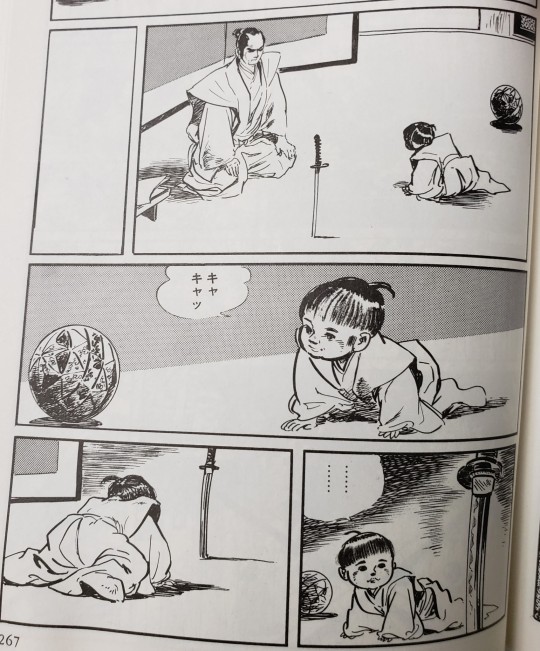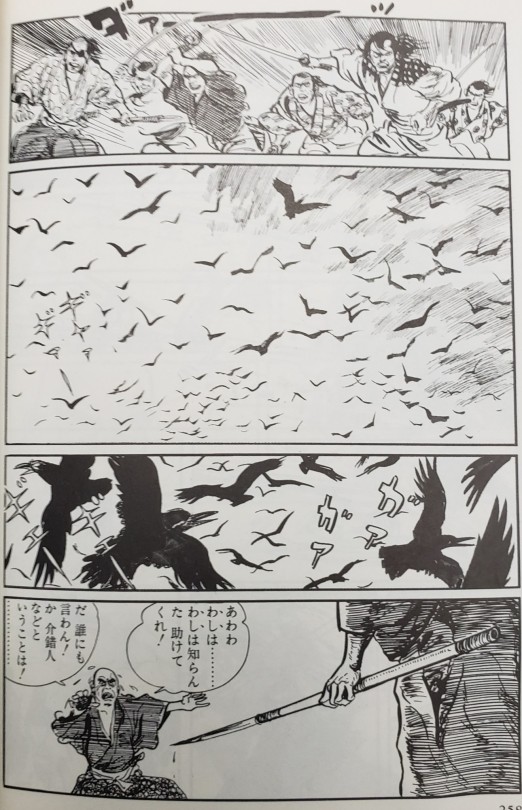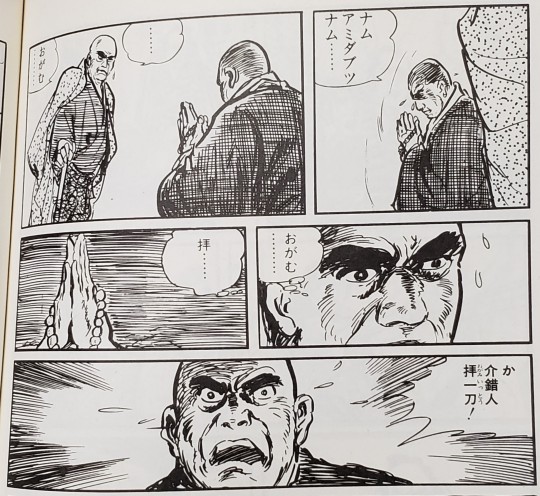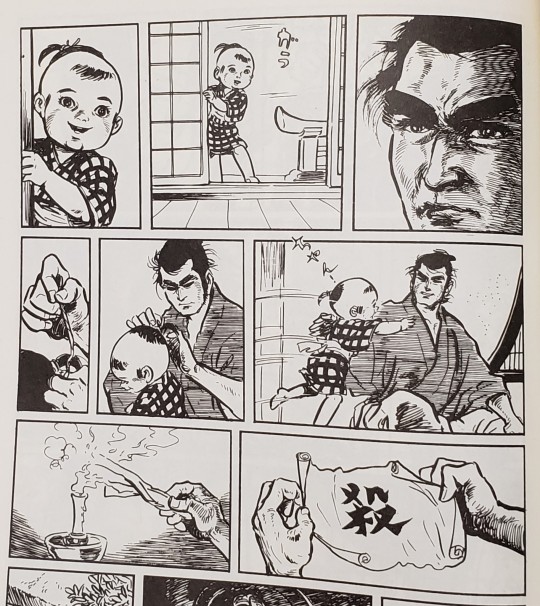#ogami itto

Ogami Itto is being thrown into prison. The guy on the left says “Hey guys, it’s time to do the welcome song!”
Whu….?

Yes, Chapter 9 is showing us a lot about Ogami Itto’s past. Here, we see that he gave a very young Daigoro the chance to choose whether he would join his father (choosing the blade), or he would join his dead mother (choosing the temari, or 手毬) – meaning that Itto would slay his son.

Two things about the end of Chapter 8. First, notice the six “tobiccho” (gang of ronin) at the top. Then notice the six uses of “ギャア” and “ガア” (basically, screams). The English translation made the first two “caww” for the crows, but it’s pretty clear they’re all the death cries of the six tobiccho, perhaps mixed in with the birds (the imagery of which is an echo of the Chapter title and subject matter, which includes the wings of birds).
Second, the leader of the tobiccho has realized who Ogami Itto really is. He begs for mercy and says he won’t tell anybody. Oddly, the English translation says “you’re the Shogun’s executioner.” But the Japanese translation only says “介錯人など” (kaishakujin nado, executioner and such). This is really the first glimpse we’ve gotten into who Itto might really be. It’s interesting that the English translation decided to reveal the shogunate connection earlier than what seems to be revealed here in the Japanese version.

At the beginning of the doubly-long Chapter 8, the head of the “tobiccho” (a gang of ronin that have banded together for general crimes and debauchery) meets Ogami Itto and says that he seems familiar. But he can’t quite place it.
At the end of the chapter, the tobiccho are preparing to leave the hot springs, and they announce that they are going to kill the other visitors to keep them quiet. One of those visitors is a sick samurai. He begs for a 介錯 (kaishaku) while he commits 切腹 (seppuku), the ritual suicide. A kaishaku basically stands behind the person committing suicide, and cuts off their head at the moment of the stomach stabbing.
The word “kaishaku” shocks a memory for the head of the tobiccho. He then sees a monk, who is chanting the Namu Amida, which makes him think おがむ (ogamu), which means “to pray” or “to pray with hands pressed together” (it’s about the posture of the prayer)…. he repeats it… ogamu… ogami…. suddenly it all clicks with “介錯人拝一刀” (kaishakujin ogami itto) – or, Executioner Ogami Itto, and he realizes who the latest visitor really is….

Chapter Six opens with an unknown man leading a horse, upon which Daigoro sits, singing a song. The man makes a comment about being told to deliver the boy to this temple, and he departs. Daigoro finds his father, upon which he reveals that the tie for Daigoro’s hair contains a message (殺, kill).
Daigoro has been involved in some important way in each chapter so far, and all quite different ways. I was not expecting this level of involvement, and it’s neat to see.

